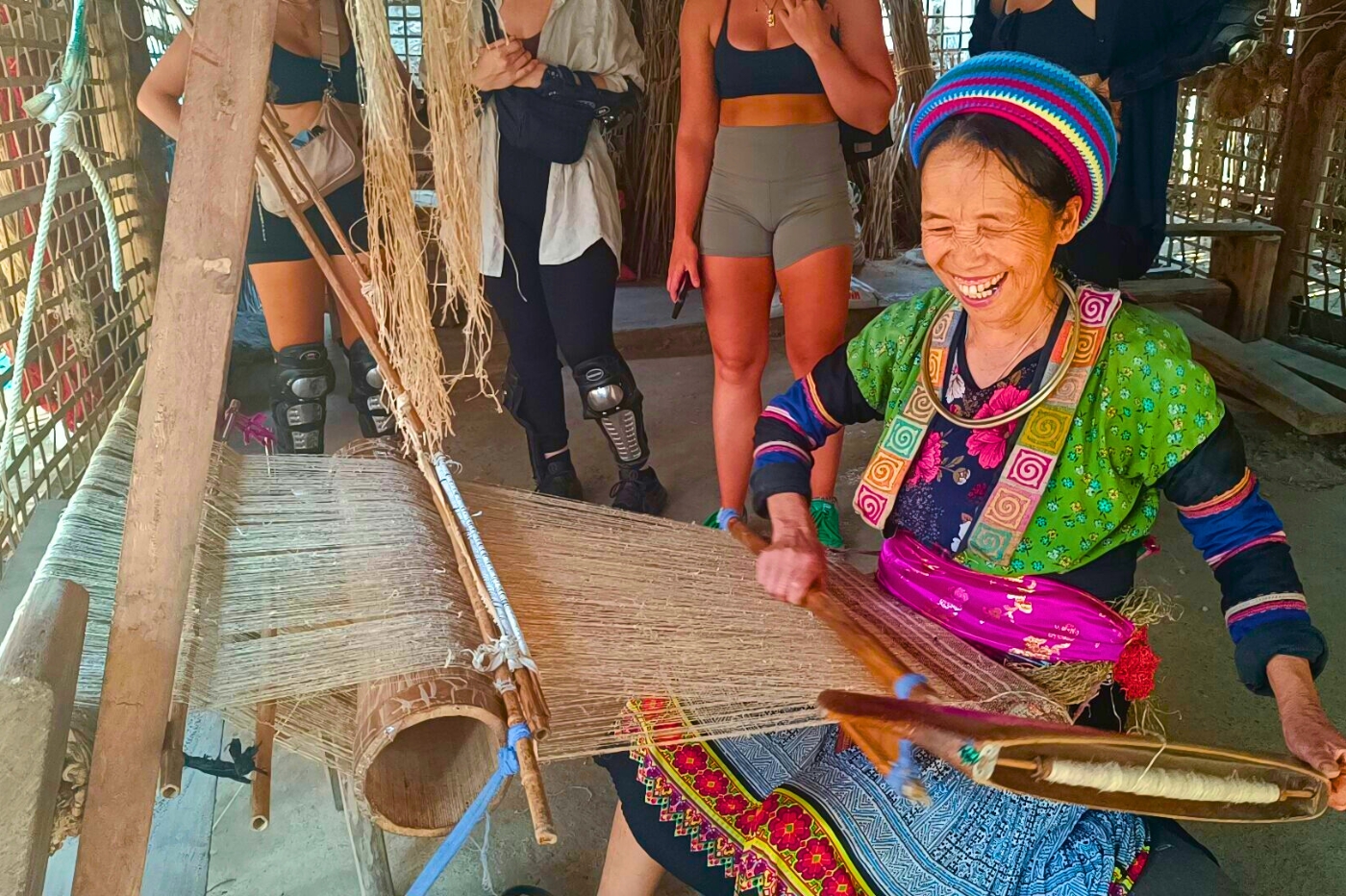
Discover the ancestral linen weaving craft of Lung Tam village
- on Feb 17, 2025 By: Phuong Mai NGUYEN
For generations, the women of the Hmong community in Lung Tam village, Ha Giang, Vietnam, have perpetuated and developed a particular expertise in hand-weaving linen. Using traditional techniques handed down from mother to daughter, they produce unique works that reflect their culture and identity. Their work is a tribute to local tradition and craftsmanship and a means of ensuring the livelihood of their households. Let’s discover the ancestral skill of hand-weaving linen in the village of Lung Tam with Authentik Vietnam!
A tribute to traditional handicrafts and Hmong culture
In 1999, Vang Thi Mai, a Hmong woman, founded a handicraft cooperative in Lung Tam village in northern Vietnam. This cooperative not only fulfills its original purpose of promoting and preserving the traditional art of hand-weaving linen but also provides a stable income for local women, fosters their economic autonomy, and strengthens community ties.
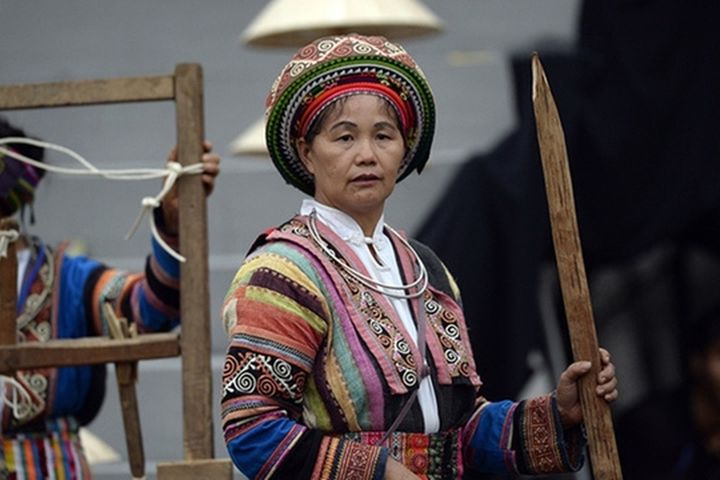
Weaving linen requires meticulous skill and great patience. The women of Lung Tam utilize handlooms to create unique pieces with traditional patterns and vibrant colors. The finished products serve as works of art, reflecting the culture and identity of the Hmong community.
The weaving process
These beautiful handicrafts are created through 20 stages of production, all performed by the women of the Lung Tam linen cooperative. After six months of growth, the local hemp is harvested, stripped of its leaves, and sun-dried before being woven. The leaves are then used as fertilizer for the next hemp crop.
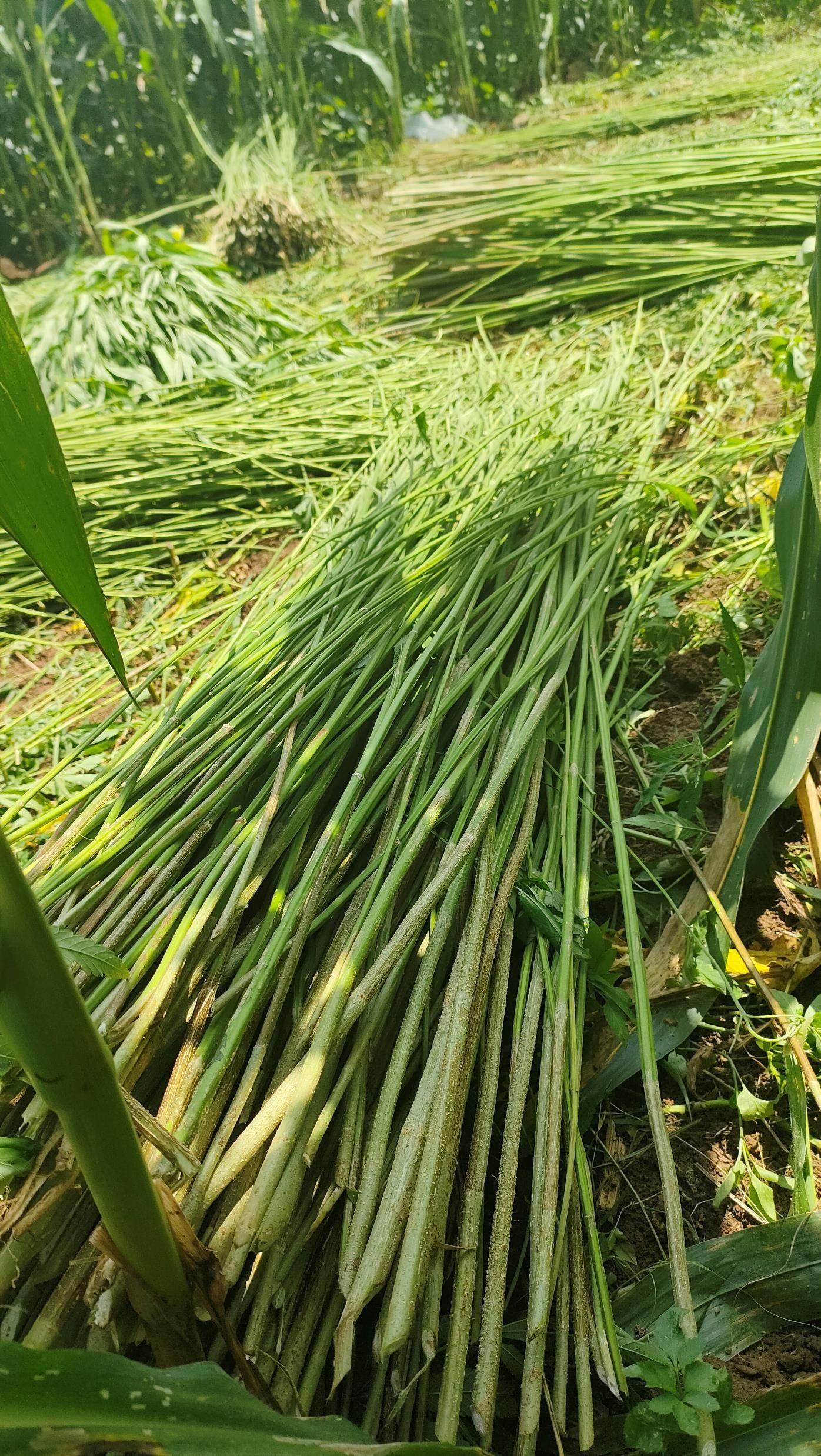
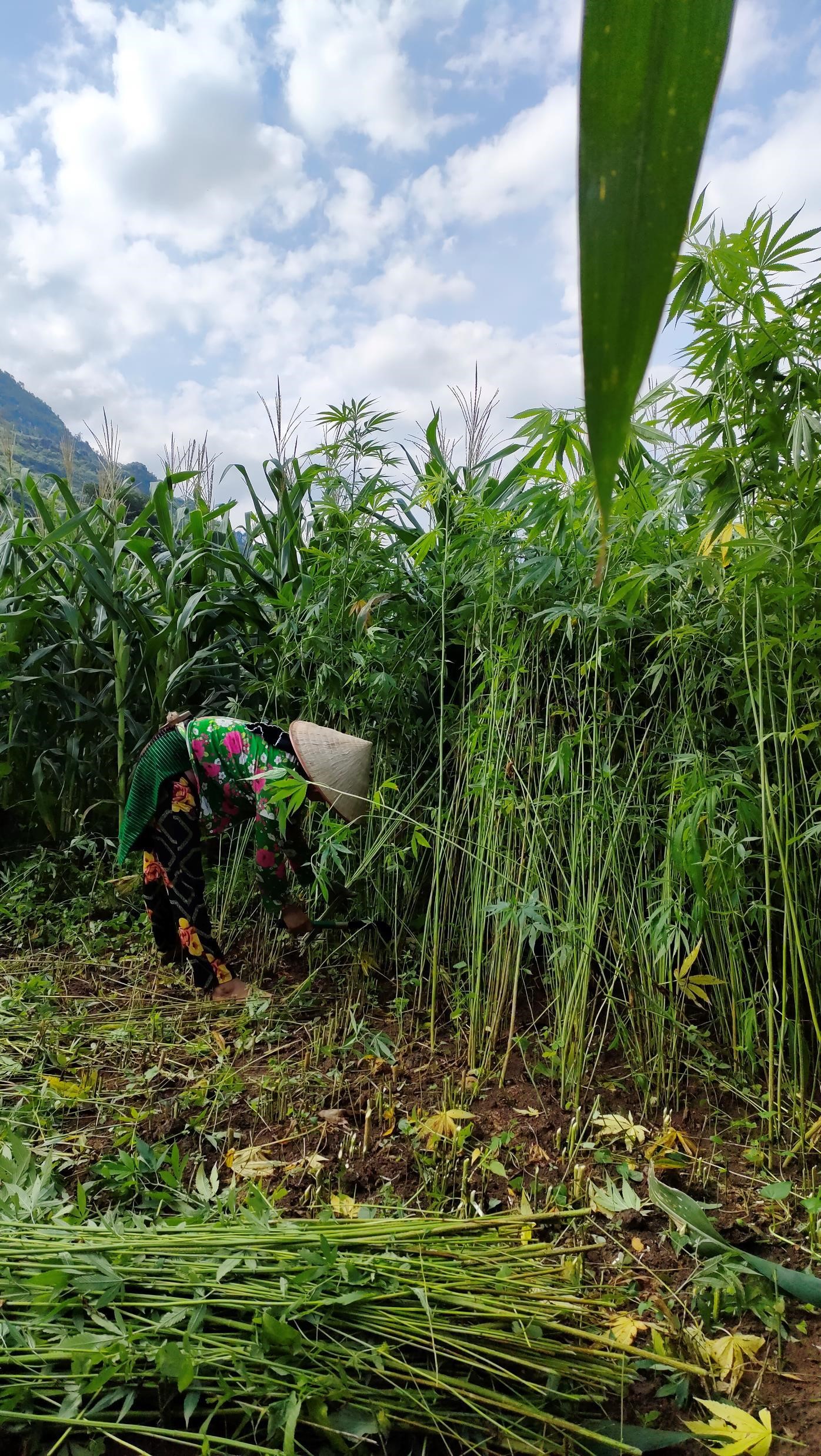
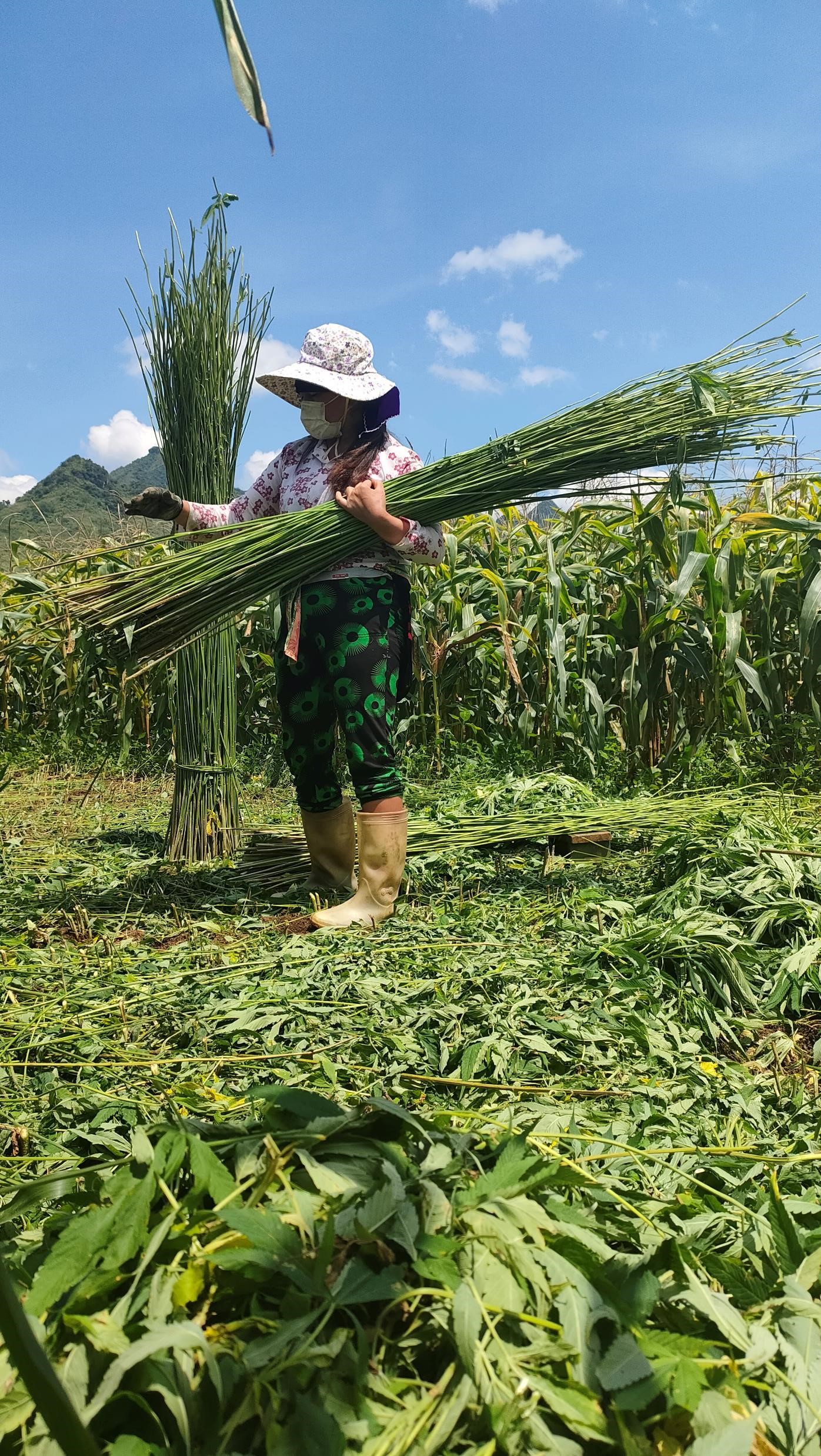
Stage 1: The stem is peeled one by one to obtain fibers
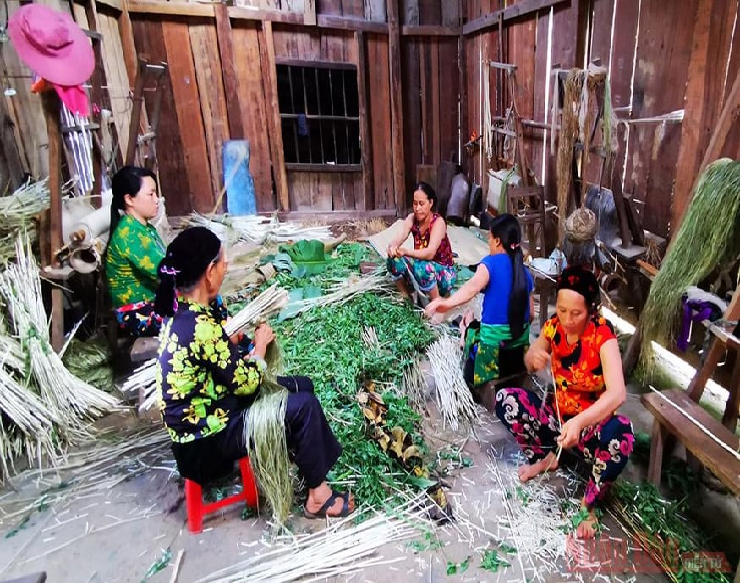
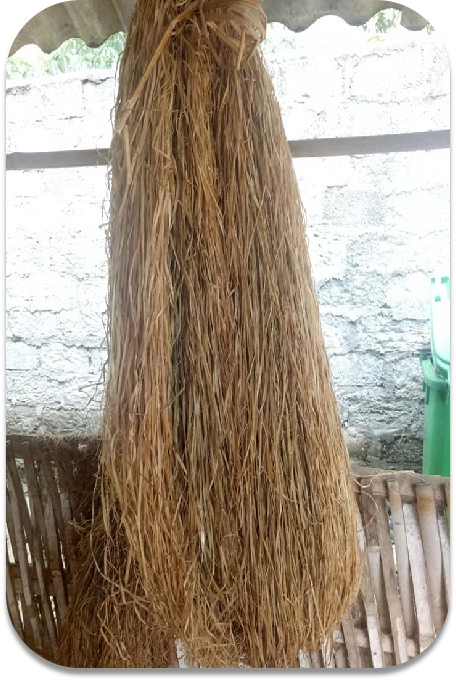
Stage 2: Beat the fibers using a large mortar and pestle to soften them (for about 40 minutes)
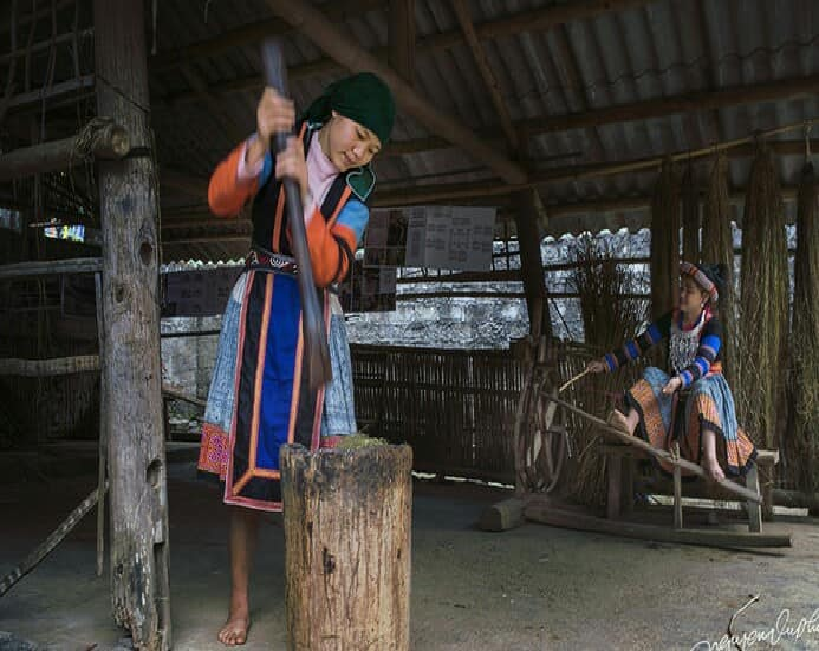
Stage 3: Connect the fibers by length in an ingenious way so that there are no visible joints.
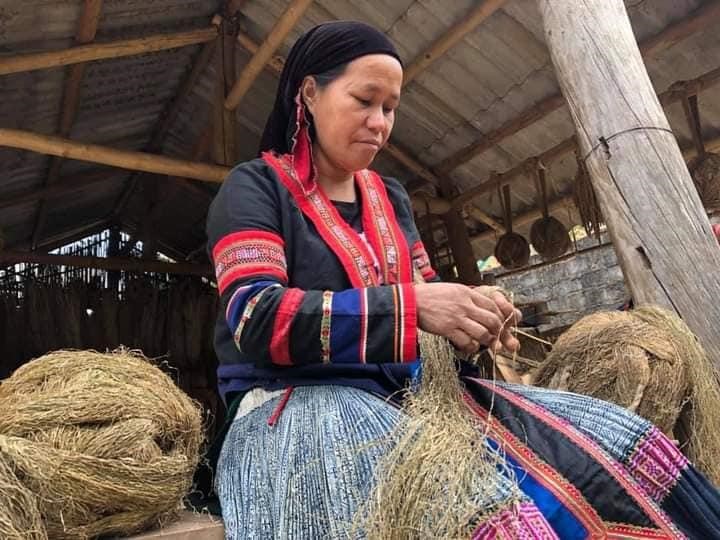
Stage 4: Spin the fibers into thread
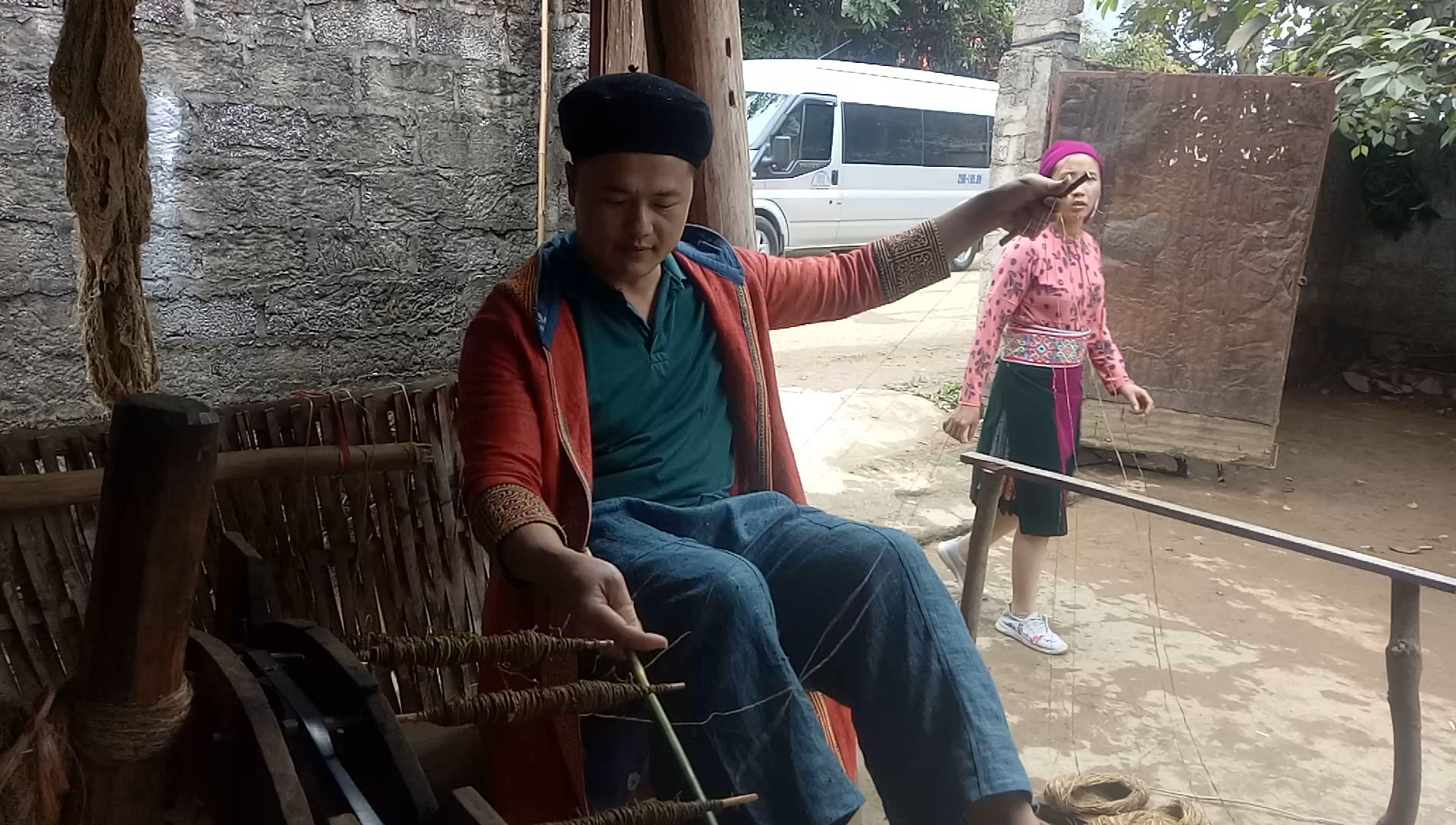
Stage 5: Stretch the fibers and connect them using bamboo trunks until they become a roll of thread weighing 2-3 kg.
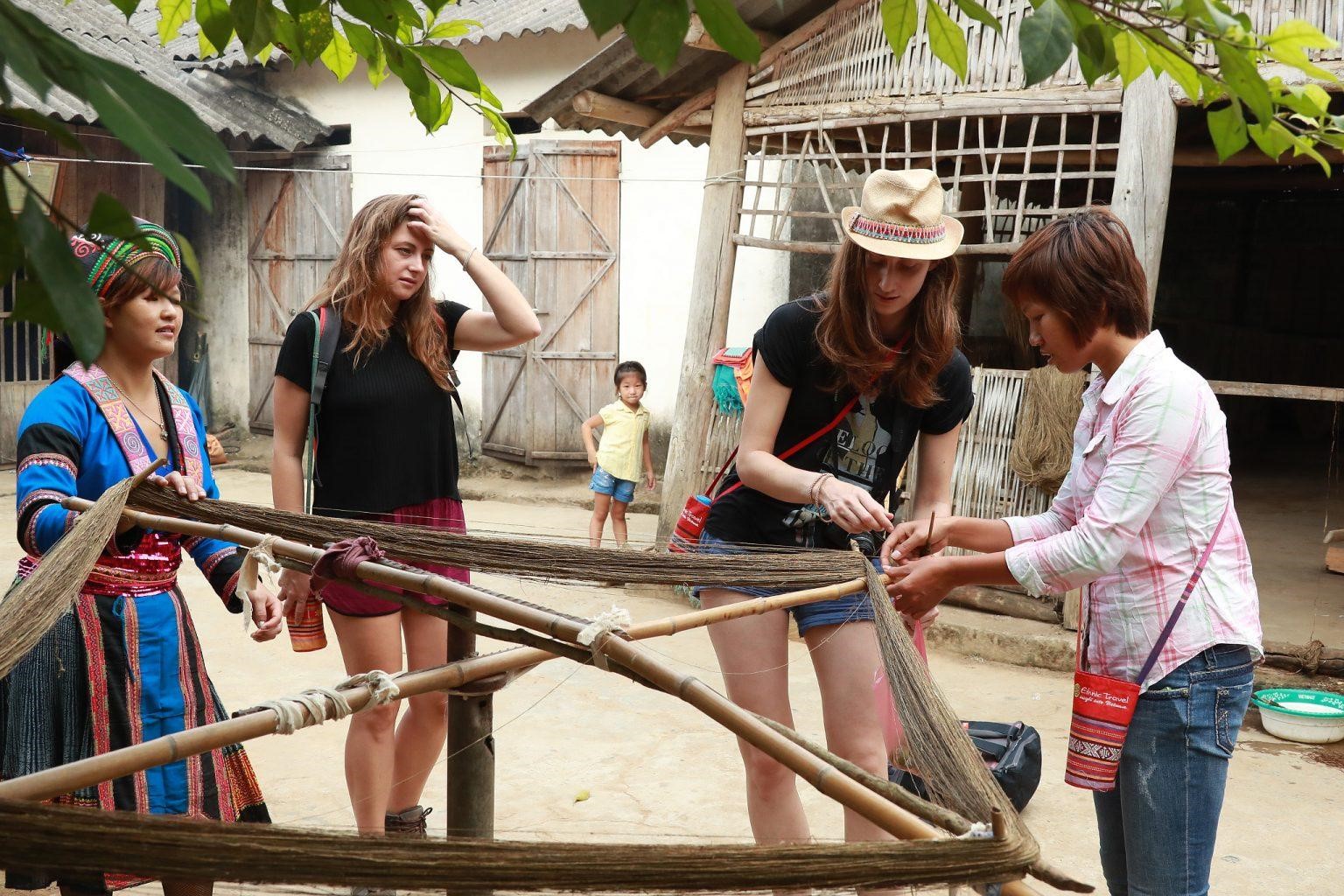
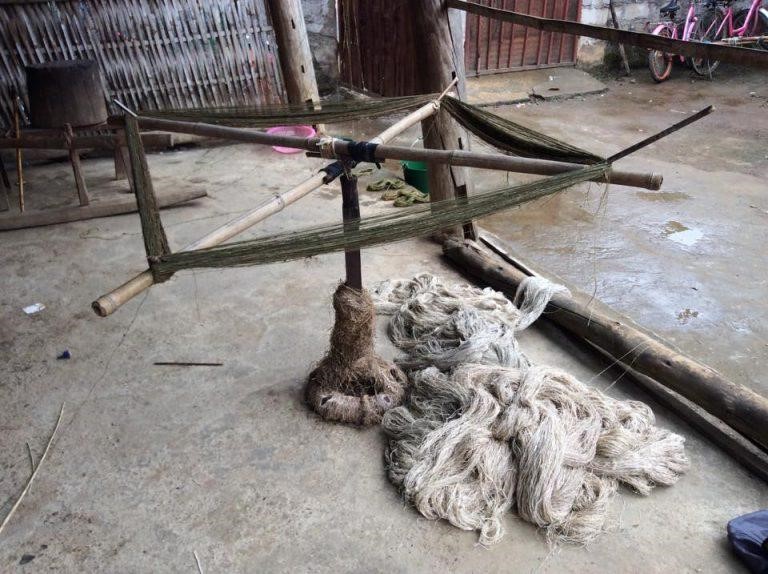
Stage 6: Boil the thread in ash water about 4 to 5 times to make them white, washing them with water between each time.
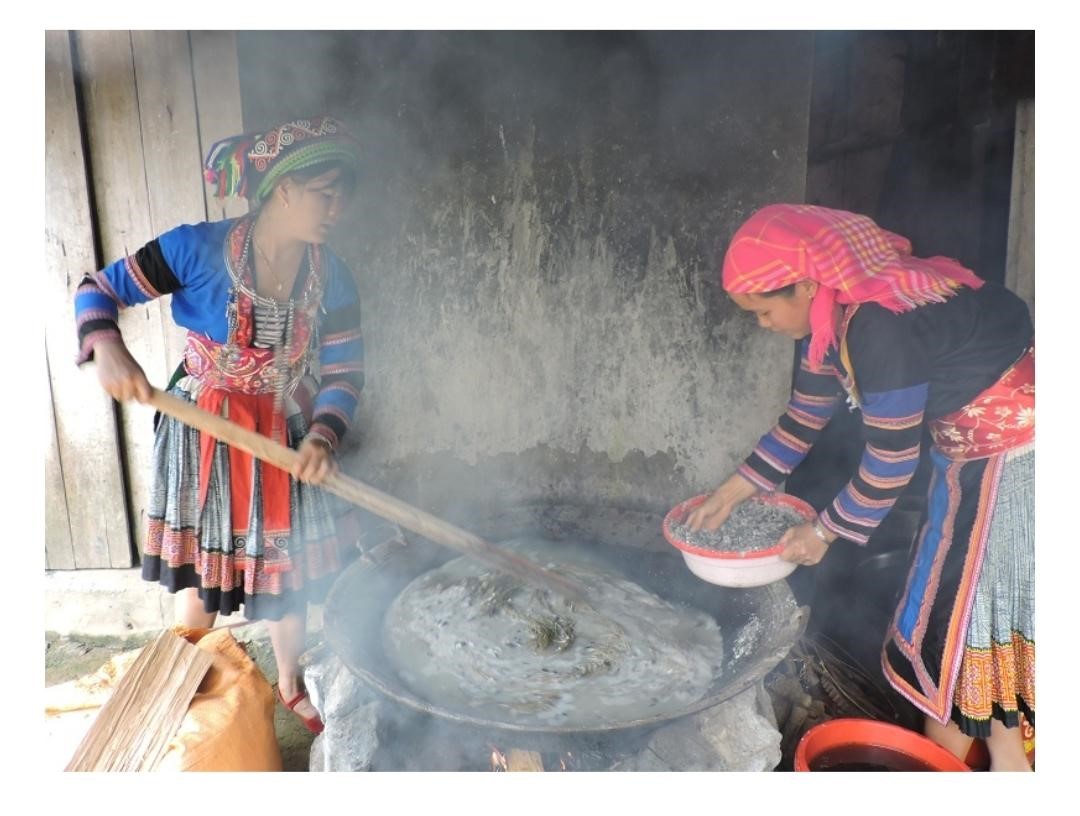
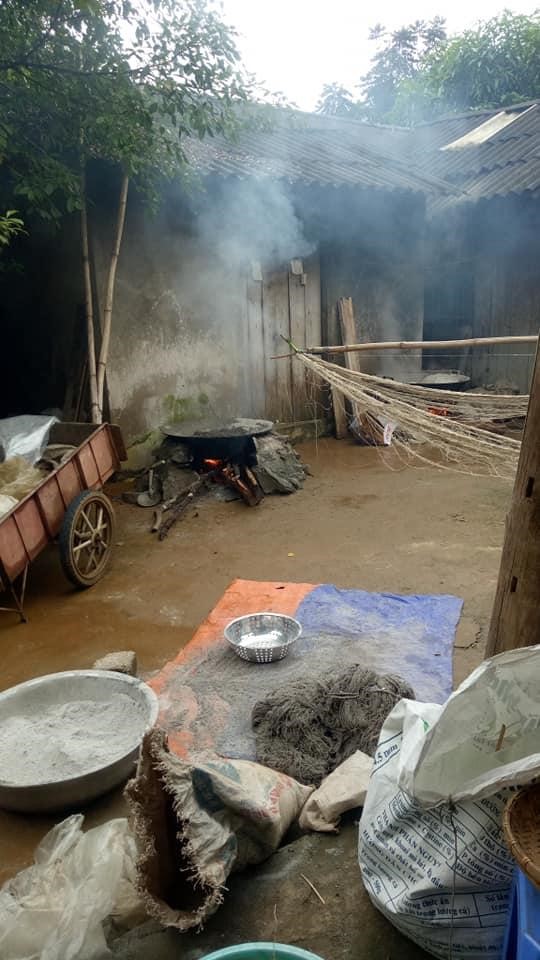
Stage 7: Wash and dry
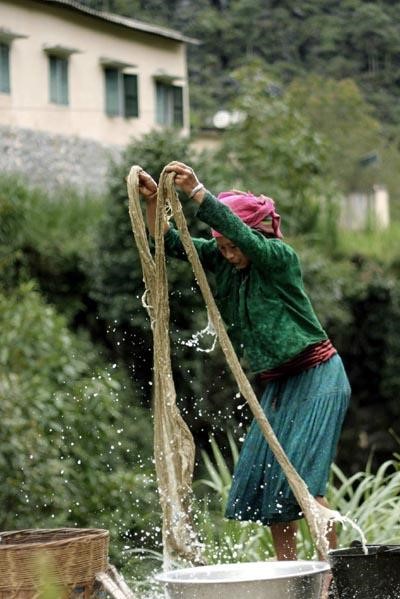
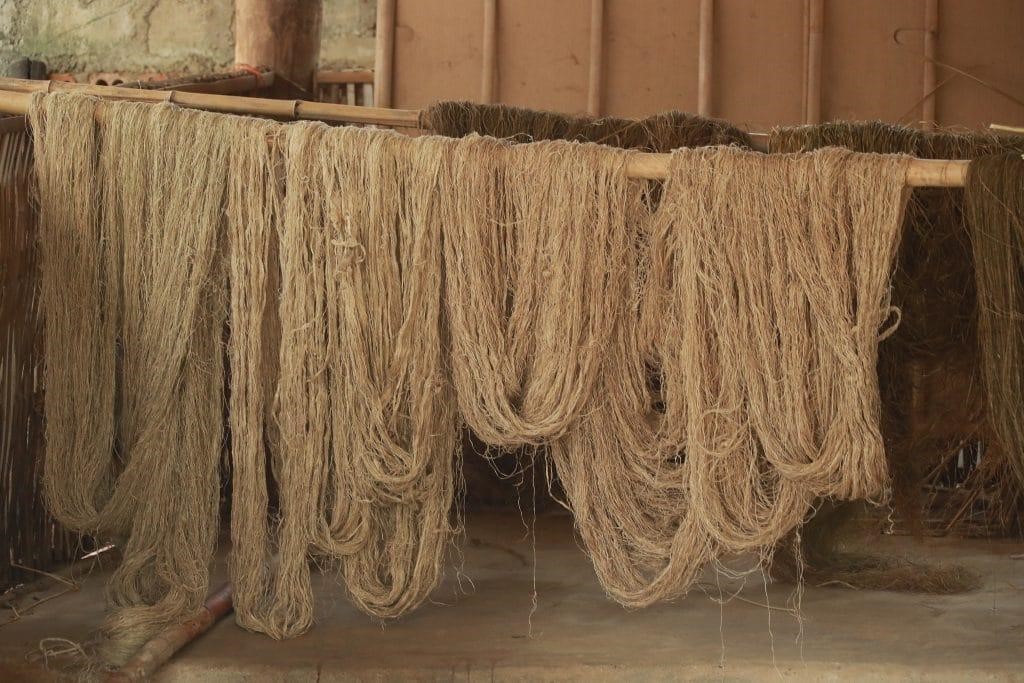
Stage 8: Separate so that the thread doesn’t stick together.
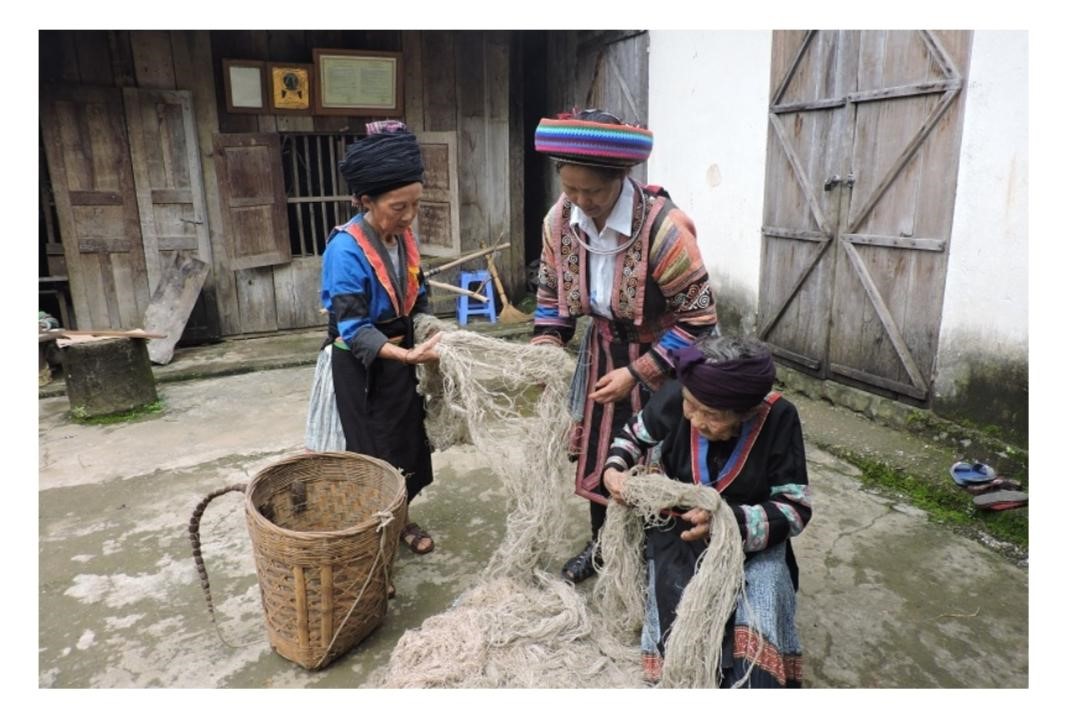
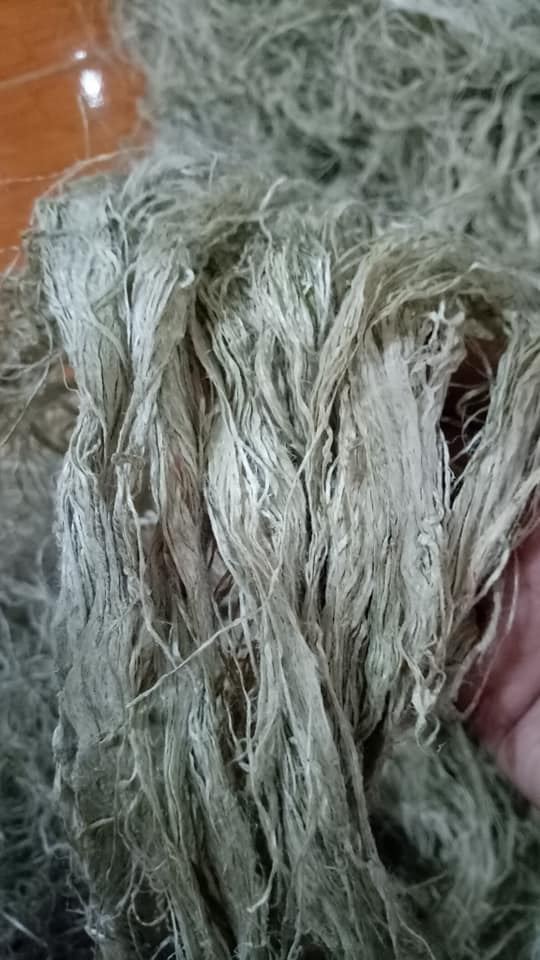
Stage 9: Roll the linen thread using rollers to soften them
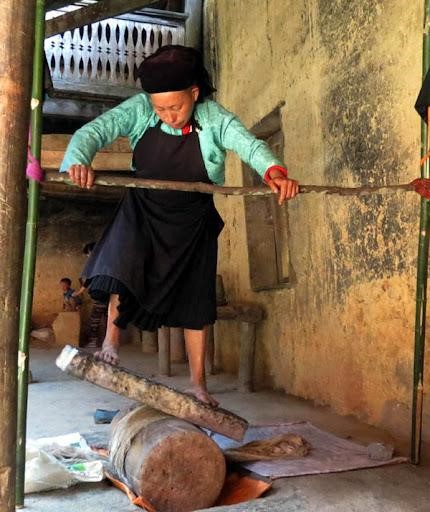
Stage 10: Using the same bamboo support, stretch and bind the thread to make 200-meter-thread rolls.
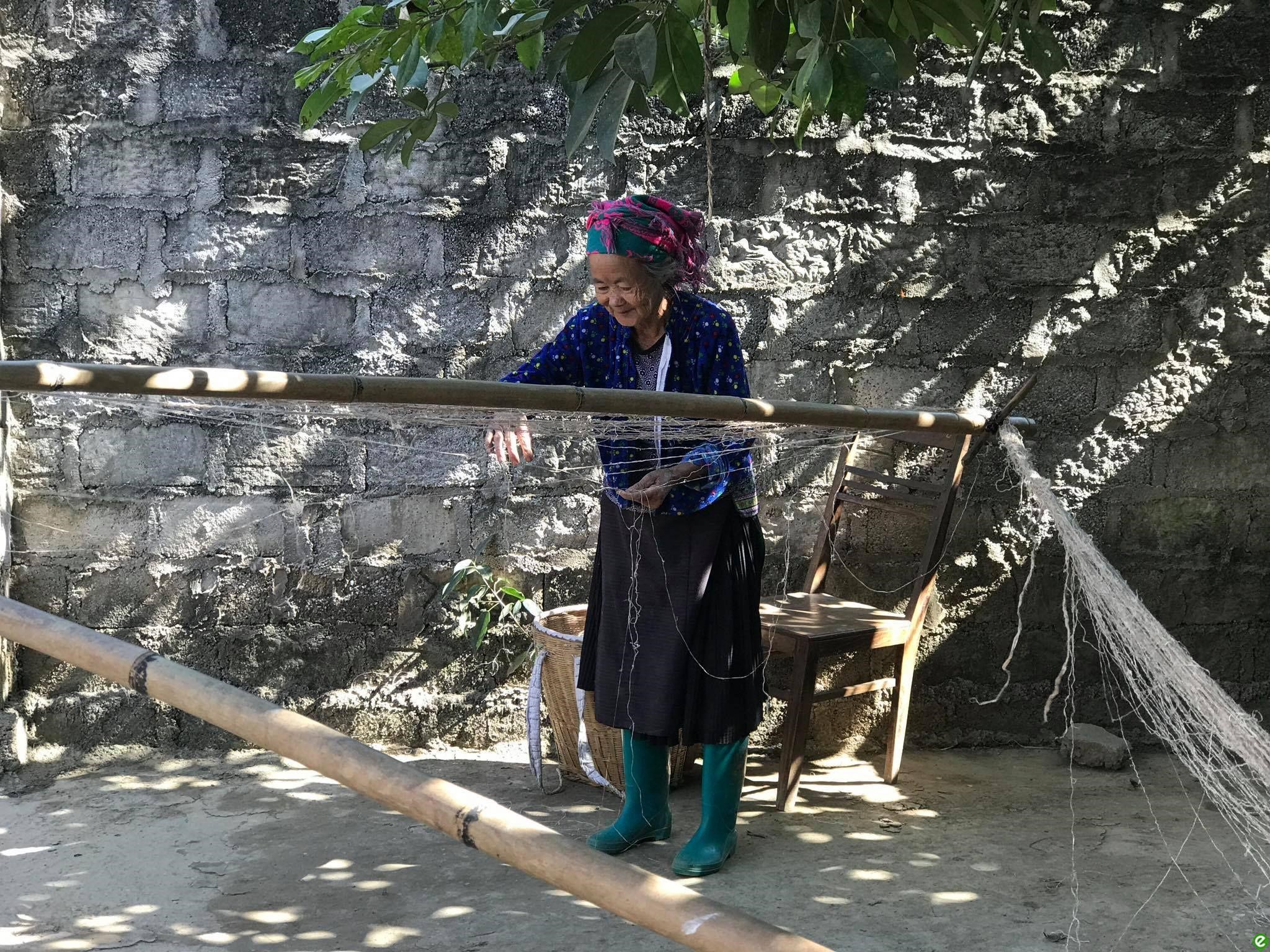
Stage 11: Prepare thread lengths in intricate rows for weaving.
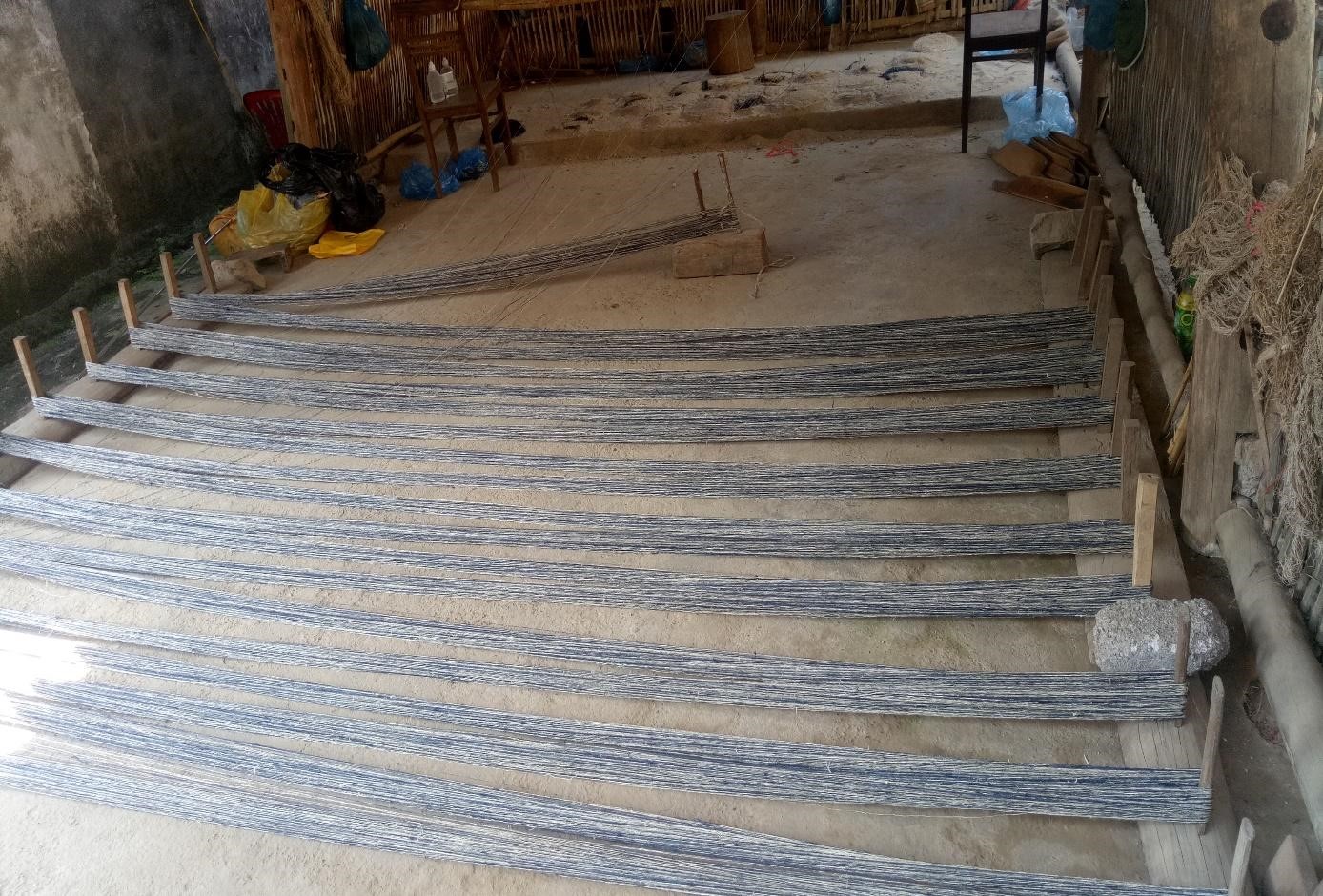
Stage 12: Weave into the fabric. These women weave eight to 10 meters of fabric each per day.
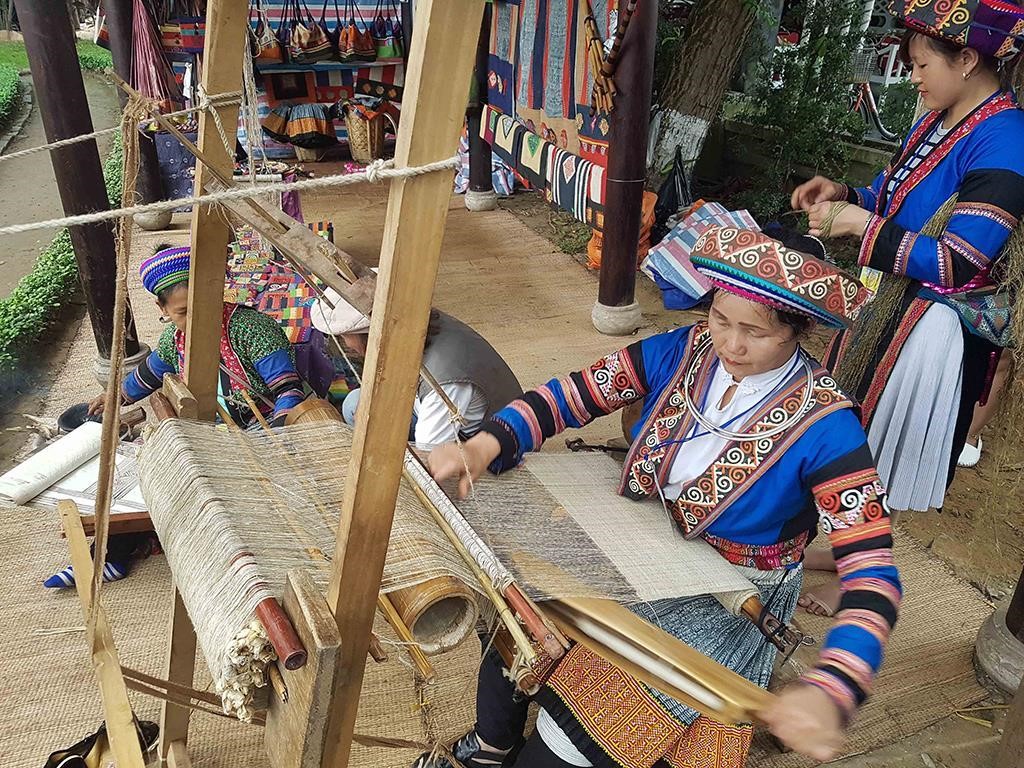
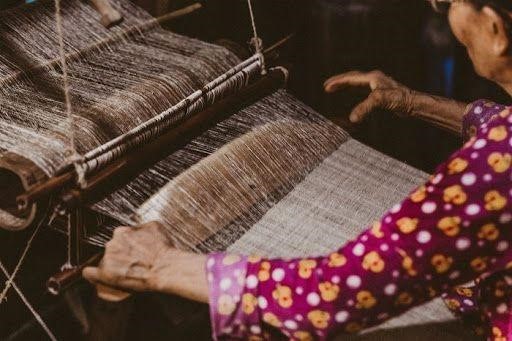
Step 13: Cut the fabric into 10-12 meter lengths after weaving.
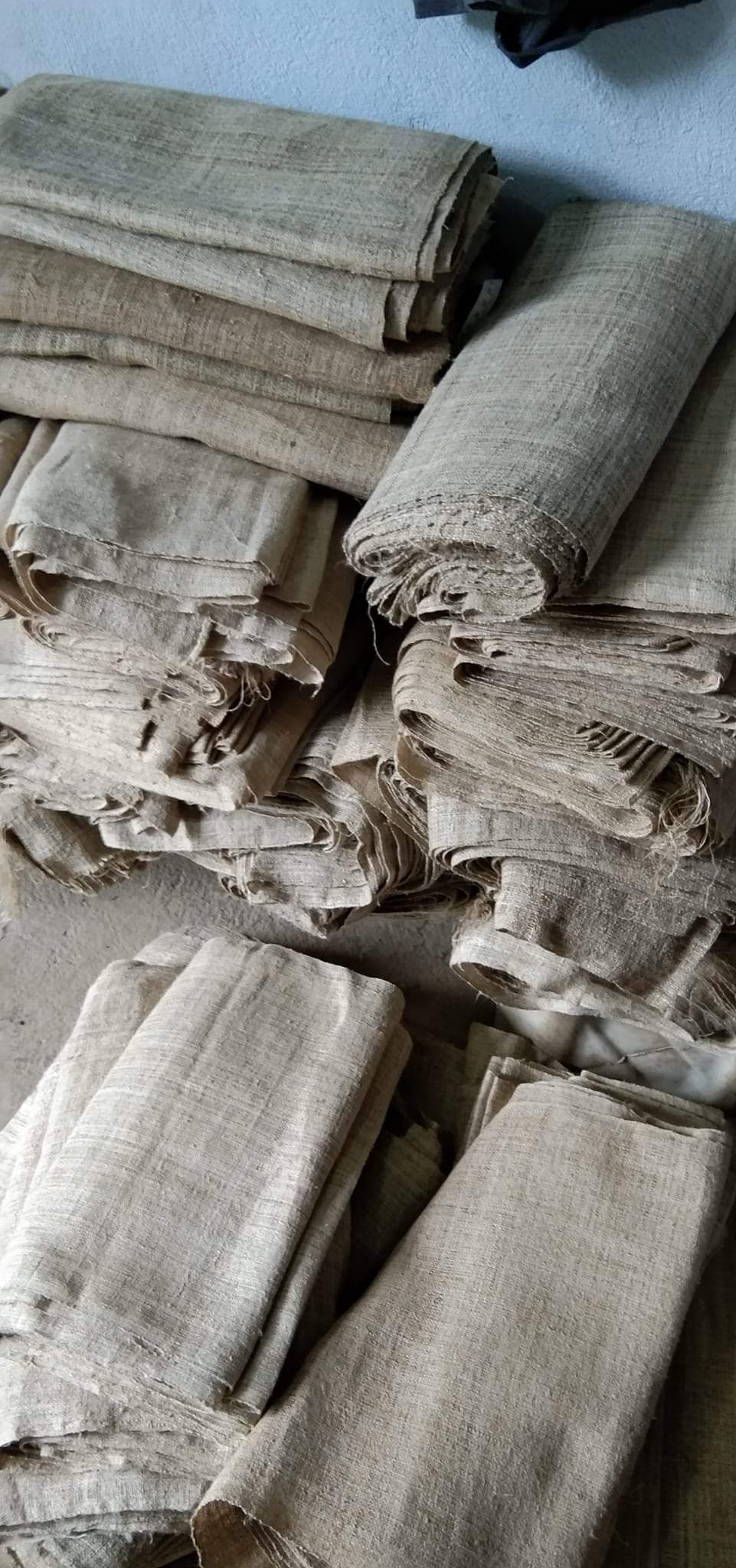
Step 14: Wash the fabric.
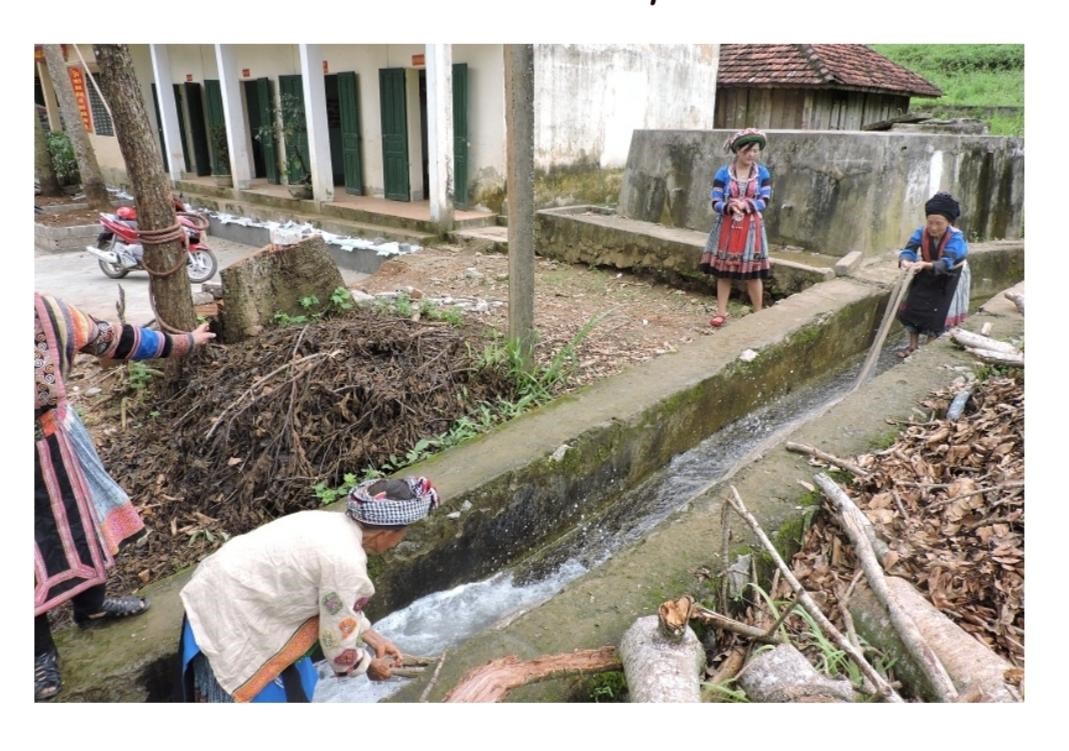
Step 15: Dry the fabric in the sun to whiten it.
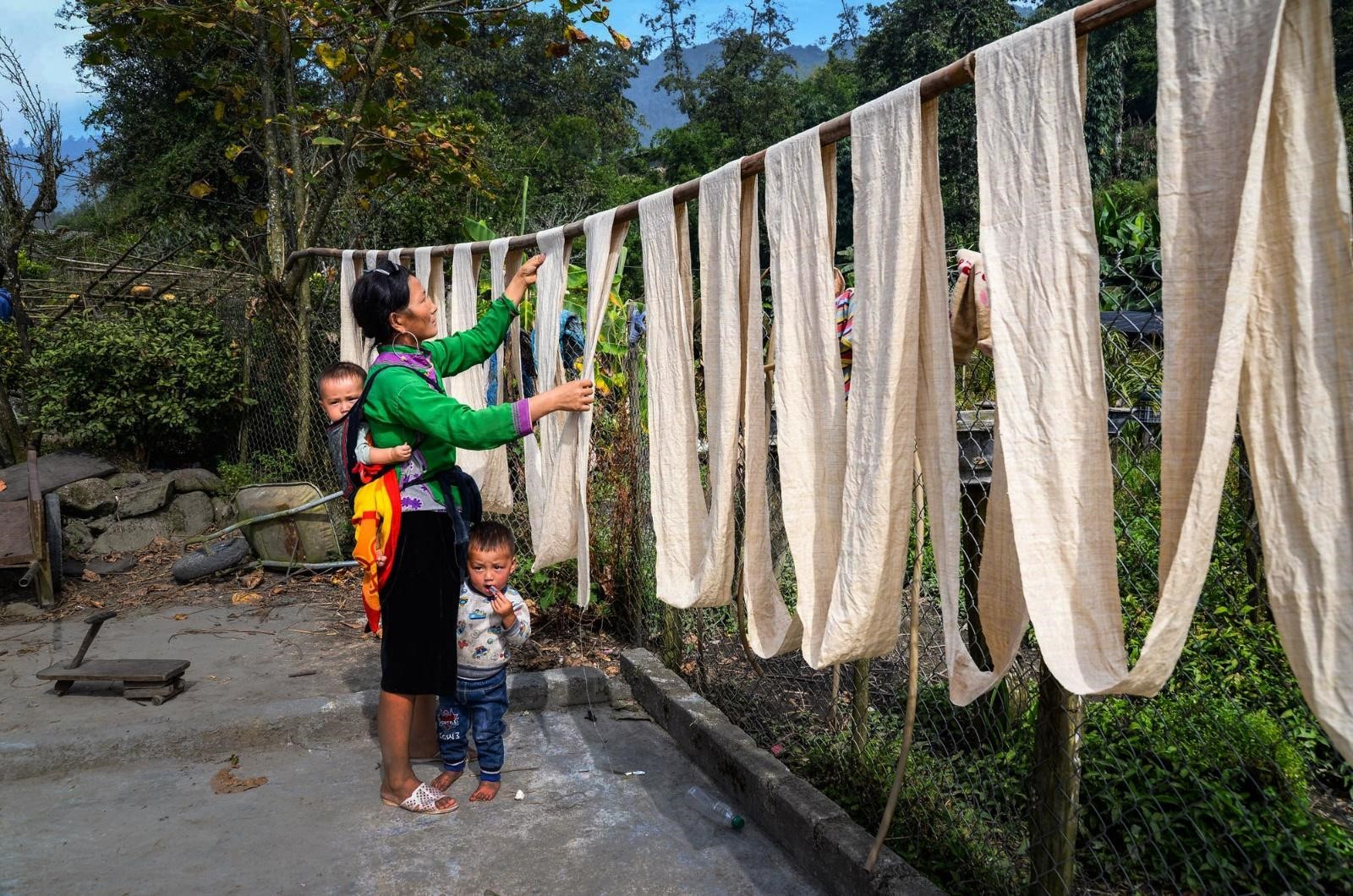
Step 16: Dye the fabric. Seven different colors are used to dye the fabric. The colors are extracted by boiling different types of leaves, except for yellow, which is made from turmeric powder, and orange, which is made from wood shavings combined with turmeric powder.
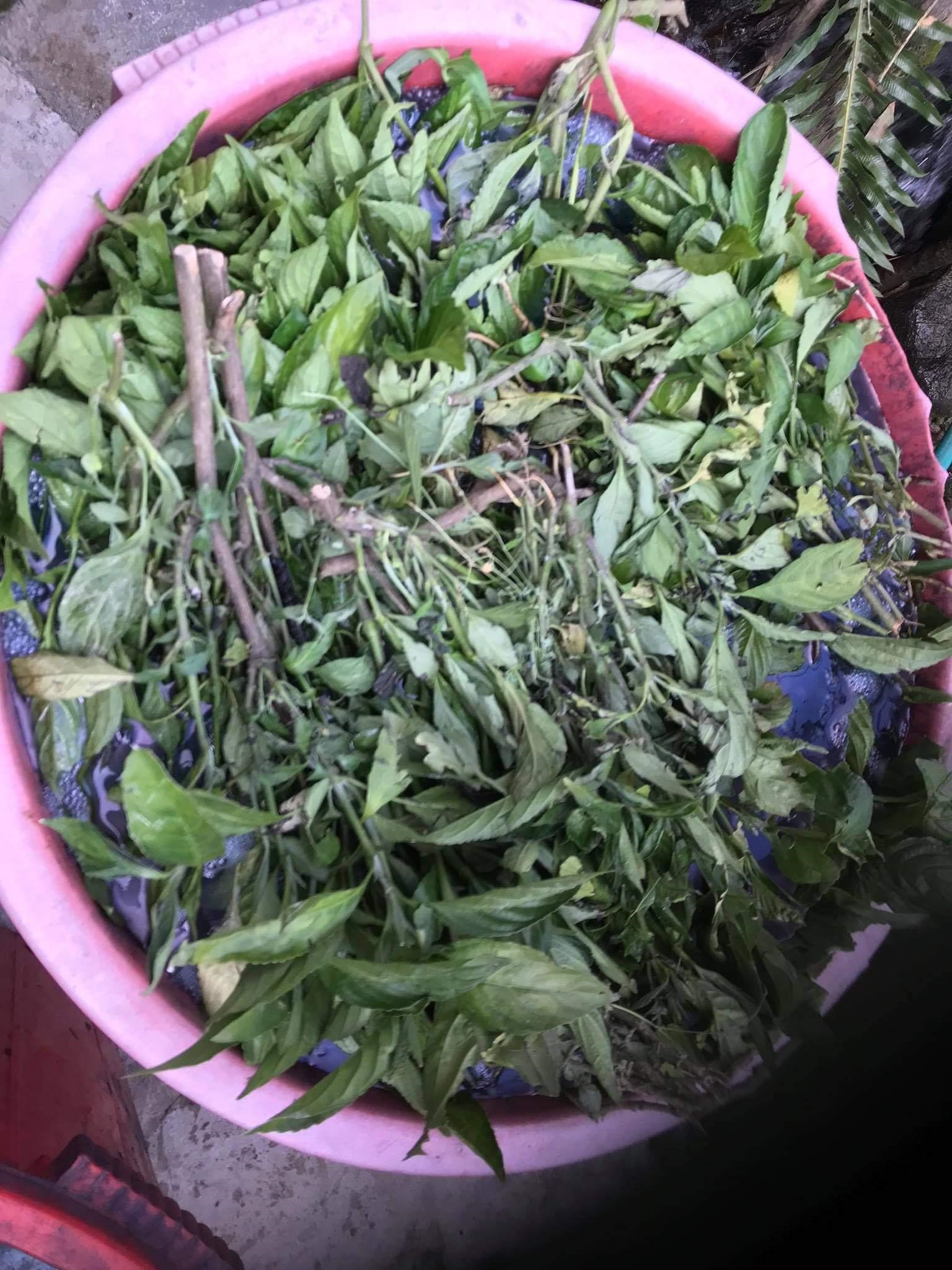
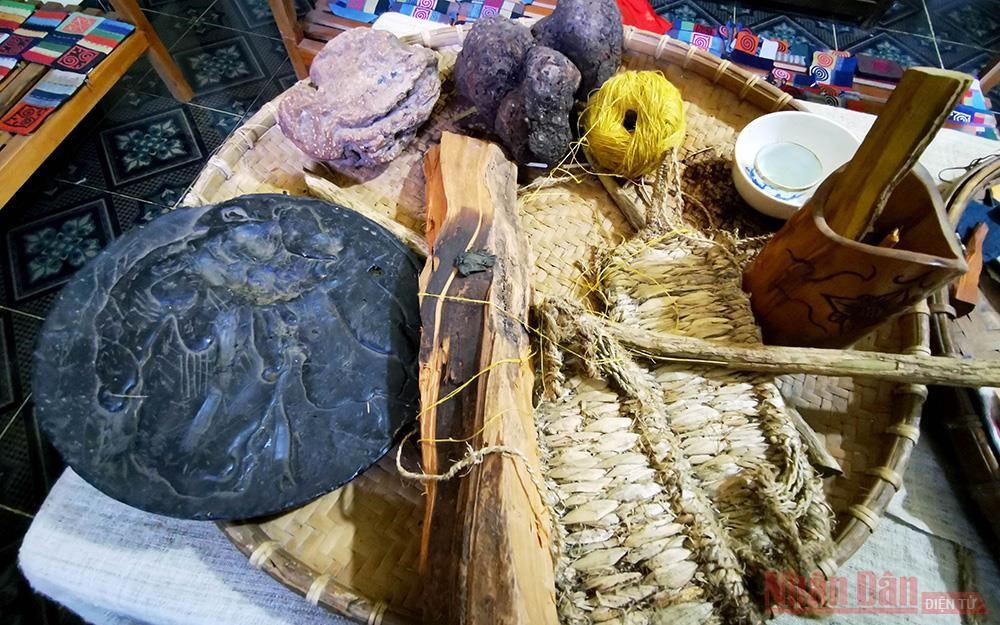
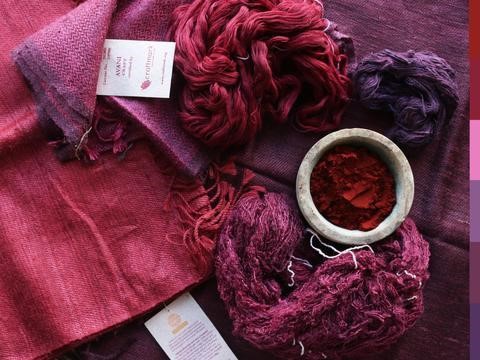
Step 17: Boil the fabric in its particular color four to five times each, washing and drying it between each time. Steam the fabric one to three times each to lock in color.
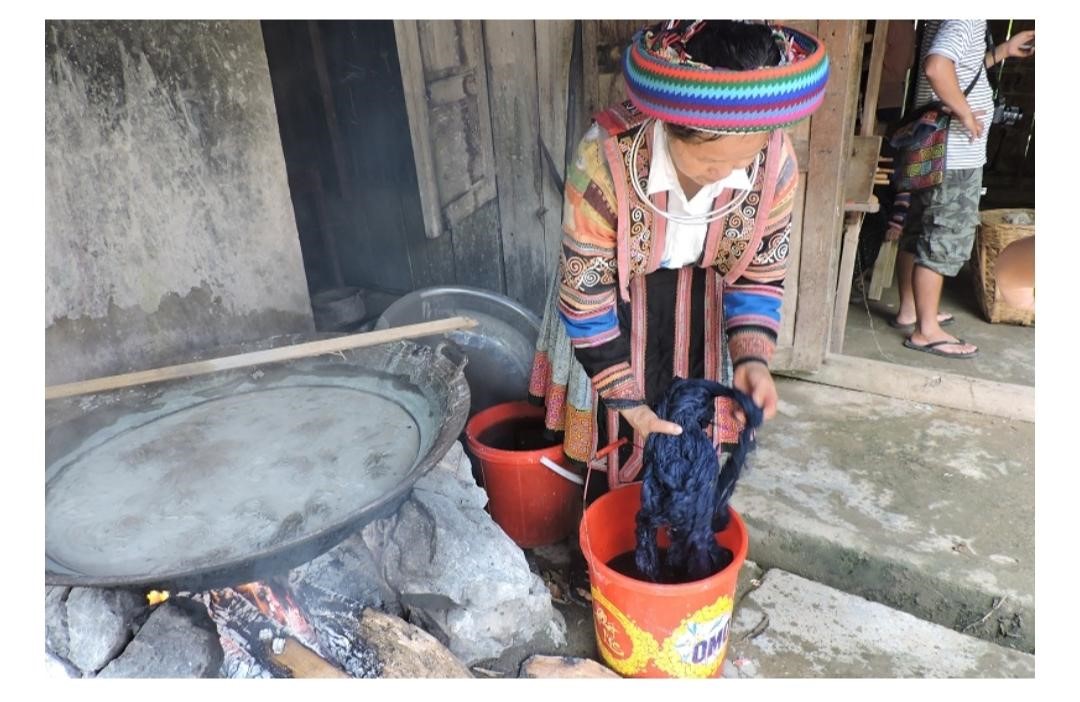
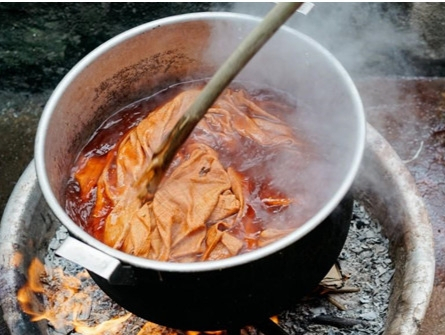
Step 18: Wash and dry fabric again.
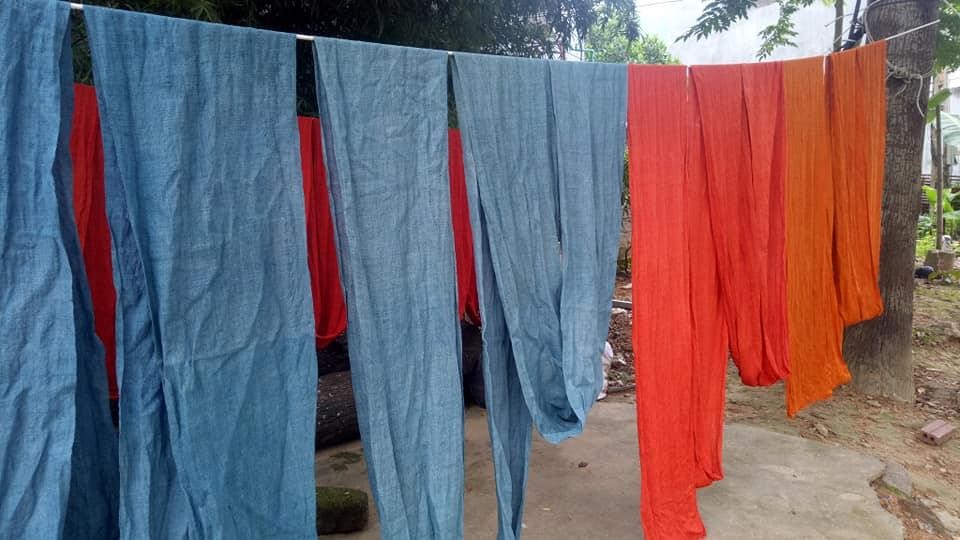
Step 19: Soften the fabric by rolling it under the rock.
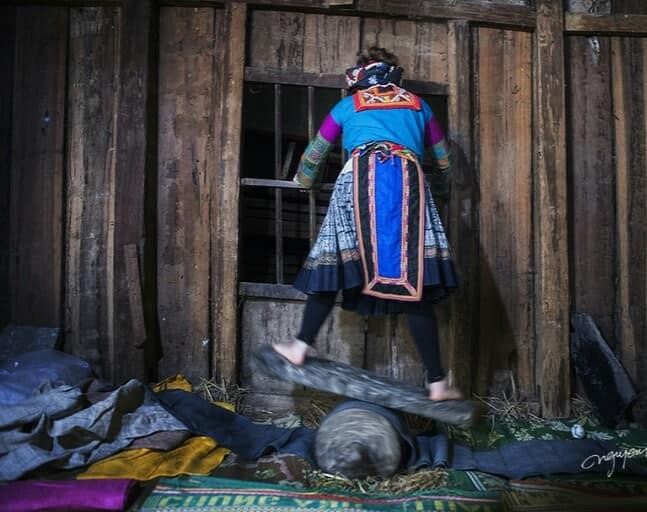
Step 20: Cut, iron, interfacer, sew, and decorate to make beautiful, high-quality products.
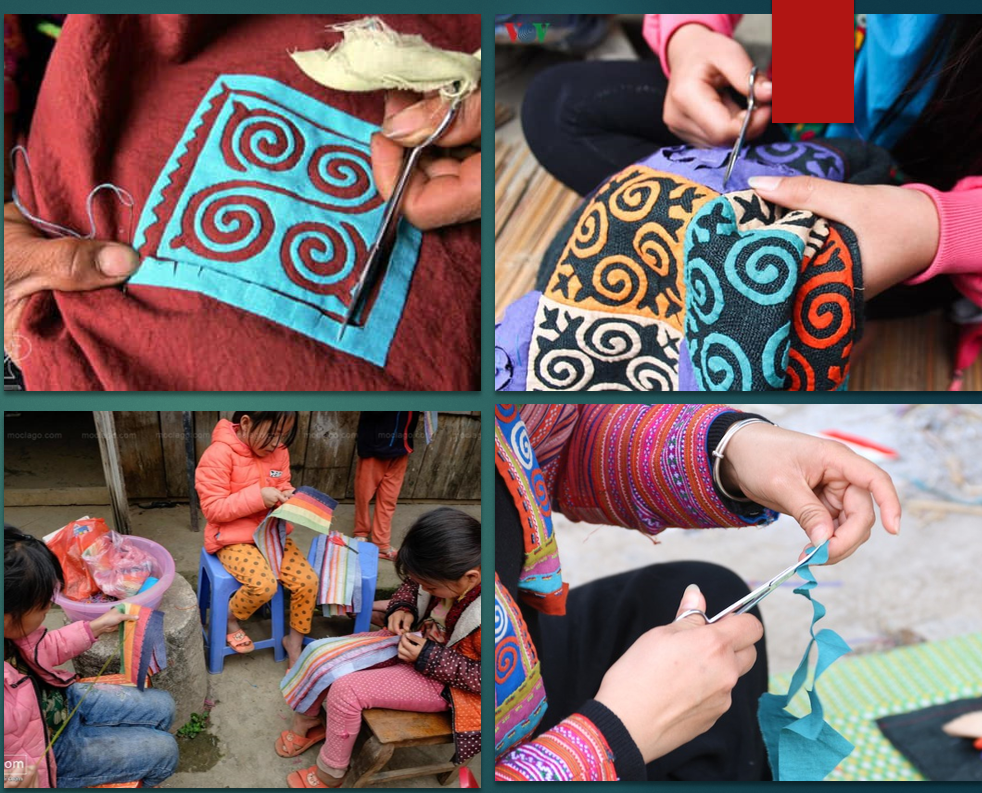
Related articles:
>> Ha Giang Vietnam: Top 10 things to see and do
>> Visit Ha Giang in 3, 4 or 5 days, what to see and do?
>> Tour in the Northeast Vietnam: Where to go? Which itinerary? What to do? How many days?
 Español
Español Français
Français









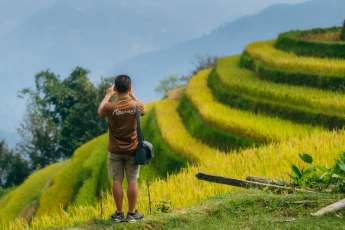
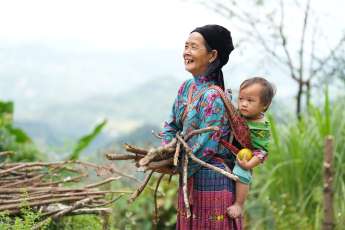
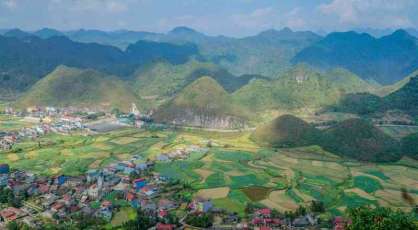
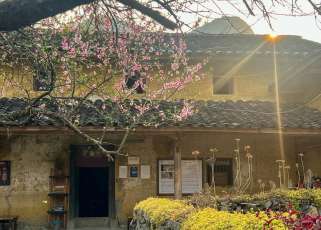







HerbertPhomaMS
on Oct 19, 2025Lilyan Cuttler
on Oct 15, 2025Avenue17XC
on Sep 14, 2025Avenue18JL
on Jul 21, 2025Judi Haigh-Smith
on Jun 29, 2025